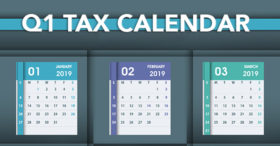If you’re like many Americans, letters from your favorite charities have been appearing in your mailbox in recent weeks acknowledging your 2018 year-end donations. But what happens if you haven’t received such a letter — can you still claim an itemized deduction for the gift on your 2018 income tax return? It depends.
Basic requirements
To support a charitable deduction, you need to comply with IRS substantiation requirements. This generally includes obtaining a contemporaneous written acknowledgment from the charity stating the amount of the donation, whether you received any goods or services in consideration for the donation, and the value of any such goods or services.
“Contemporaneous” means the earlier of 1) the date you file your tax return, or 2) the extended due date of your return. So if you made a donation in 2018 but haven’t yet received substantiation from the charity, it’s not too late — as long as you haven’t filed your 2018 return. Contact the charity and request a written acknowledgment.
Keep in mind that, if you made a cash gift of under $250 with a check or credit card, generally a canceled check, bank statement or credit card statement is sufficient. However, if you received something in return for the donation, you generally must reduce your deduction by its value — and the charity is required to provide you a written acknowledgment as described earlier.
Substantiation is serious business
Don’t take the substantiation requirements lightly. In one U.S. Tax Court case, the taxpayers substantiated a donation deduction with canceled checks and a written acknowledgment. The IRS denied the deduction, however, because the acknowledgment failed to state whether the taxpayers received goods or services in consideration for their donation.
The taxpayers obtained a second acknowledgment including the required statement. But the Tax Court didn’t accept it because it wasn’t contemporaneous (that is, it was obtained after the tax return was filed).
2018 and 2019 deductions
Additional substantiation requirements apply to some types of donations. We can help you determine whether you have sufficient substantiation for the donations you hope to deduct on your 2018 income tax return — and guide you on the substantiation you’ll need for gifts you’re planning this year to ensure you can enjoy the desired deductions on your 2019 return. Call us at 205-345-9898.
© 2019 Covenant CPA



